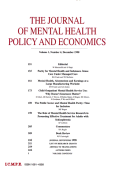Background: Suicide continues to be a major problem worldwide. Persons with a
lived experience are being actively involved in suicide research and reports
suggest that co-production of suicide research with persons with a lived
experience significantly improves its quality and appropriateness.
Aims of the Study: The aims of this paper are (i) To identify challenges to
Australian suicide prevention strategies and interventions and (ii) To offer
recommendations to address these challenges.
Methods: This perspective article is a co-production between an
experienced mental health researcher and a person with a lived experience of
suicidality, who has worked as a suicide prevention worker and has held
leadership positions in government and non-government suicide prevention
programs.
Results: Challenges to Australian suicide prevention strategies and
interventions include: the careless reporting of suicide in the media, the
continuing stigma in seeking help, stigma as a barrier to gatekeeper training,
the entry point of suicide prevention services and care of those with suicidal
ideation/attempt. Recommendations include: that media must consider the
responsible reporting of suicide as a duty of care; that the community response
to help-seeking for suicide needs to be one of compassion; that gatekeeper
training should be expanded to be universally accessible and messaging in
suicide prevention training programs must pay attention to its rationale; that
services for those with suicide ideation and attempt must commence with
providing a safe space and empathetic support by peer workers and that
continuing care after suicidal attempt must be informed by the individual’s
needs and include informal and family carers, as well as other community
agencies.
Discussion: Stigma related to suicide continues to be a major barrier to help
seeking and suicide prevention training. The approach to suicide prevention and
intervention services needs to focus on stigma reduction, responsible reporting
by media and a person-centred approach to care. The perspectives identified
here are by no means comprehensive but are merely our observations that we
believe, need attention.
Implications for Health Care
Provision and Use: These perspectives have
implications for the early identification and assistance of those at risk of
suicide in the community as well as for suicide intervention services.
Implications for Health
Policies: These perspectives have implications for policies related to
public health education including the expansion of gatekeeper training,
journalism and media, as well as national and state suicide prevention
strategies.
Implications for Further
Research: Further research might focus on suicide related stigma reduction
measures within communities, improved suicide intervention services, and
continuation of care following suicide attempts. |
